Utility Company Protects Their Roof - How To Follow Their Example
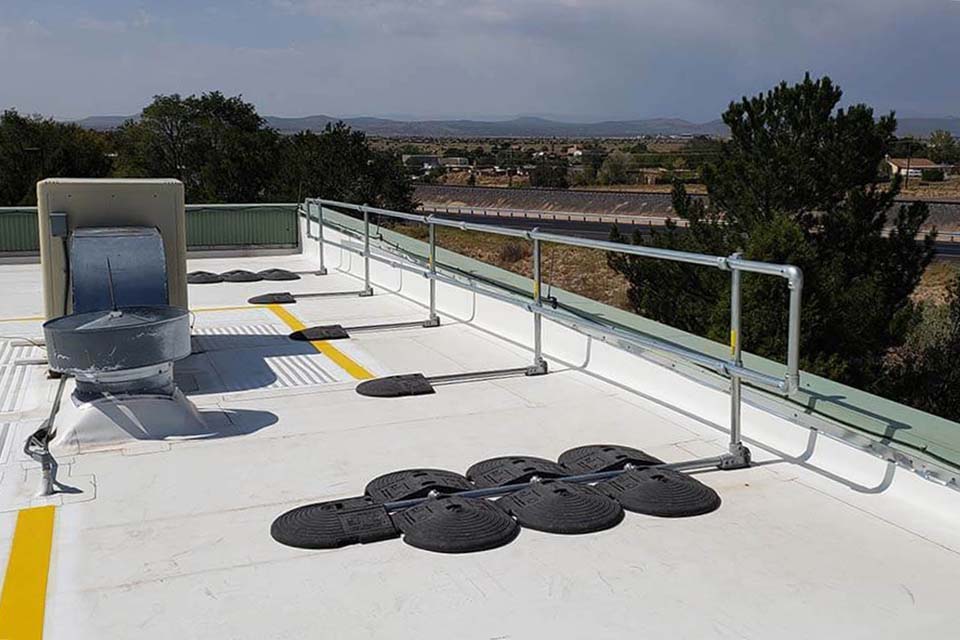
Roof safety doesn’t have to be overwhelming. Having 10 different buildings with HVACs doesn’t mean that you must have thousands of feet of rooftop guardrail.
Let’s be honest, most budgets don’t accommodate the cost for that much railing. So, what do you do?
We worked with a major utility company that focused on the important parts of roof safety. Focusing on the high-risk areas is leaps and bounds better than waiting for a budget to cover the whole perimeter of your roof.
Let’s walk through the areas that were focused on to make this facility a safe working environment.
Protect the Roof Access Points
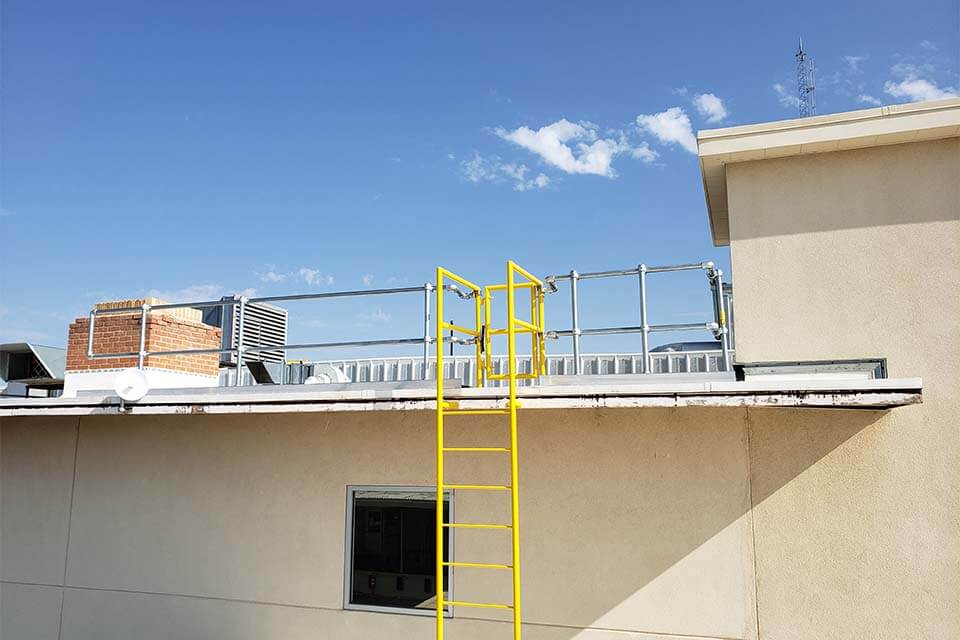
The first area that was addressed was how their maintenance staff gained access to the roof. This is an often-overlooked roof hazard, which is a bit ironic in my opinion. Roof access points are the most traversed areas on the roof. After all, you can’t go to an HVAC system until you’ve accessed the roof.
We placed guardrails on both sides of each ladder access point that was exposed to a roof edge. We also connected the railing to the ladder to prevent any gaps in protection. Some ladders can be a bit flimsy, and these attachments will help stabilize the pass-through rails on a ladder.
You’ll see that the ladders our customer purchased also came with a self-closing safety gate. This is one of the requirements for an OSHA-compliant ladder system.
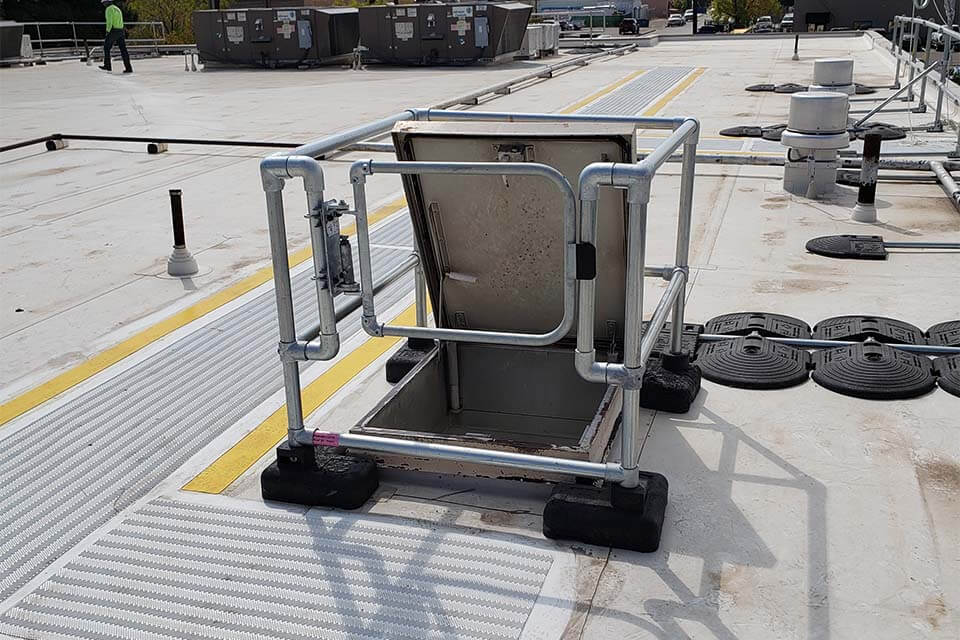
Another commonly overlooked hazard is the roof hatch. It’s easy to assume that this access point doesn’t need protection because they tend to be in the middle of the roof.
This is true if the door remains closed, which is impossible. Stepping through the hatch means that you are next to that hazard until you close the door. Not to mention that the likelihood of someone closing the hatch door every time is unlikely. Either way, OSHA requires that you have a guardrail around the ladder access point.
Protect the Roof Edges Near RTUs
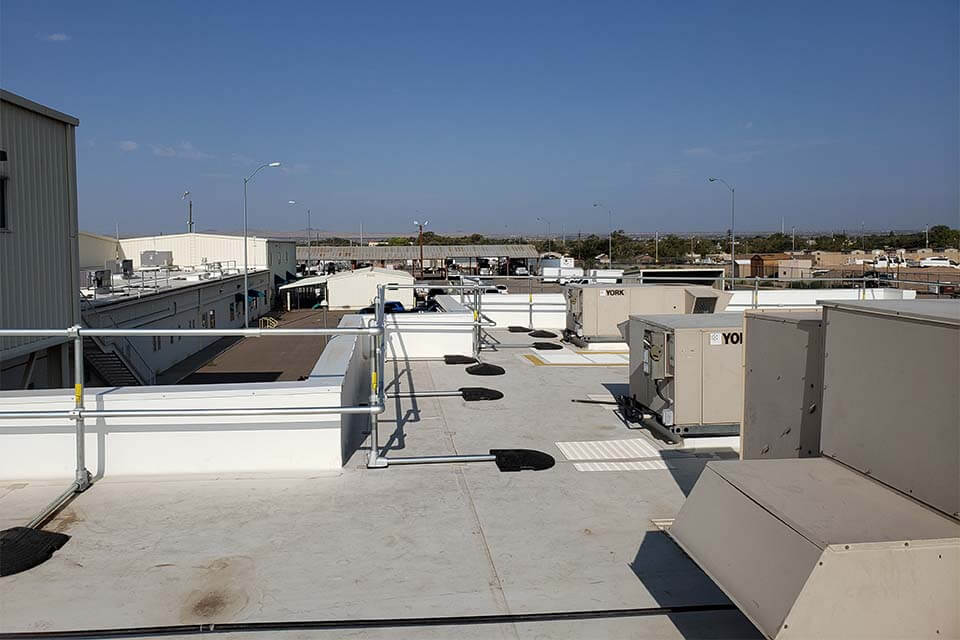
The most well-known hazard on a roof is the edge near your mechanical rooftop units. These units range from large HVAC systems to small condenser fans. Either way, if access to the unit is required, any edge near the unit needs to have protection.
OSHA has better defined when fall protection is needed for a roof edge. To put it simply, fall protection is always needed within 15 feet of a roof edge. This should make it easy for you to pick out what units need to be protected immediately and what units can be saved for a future safety inspection.
Protect Your Roof Skylights
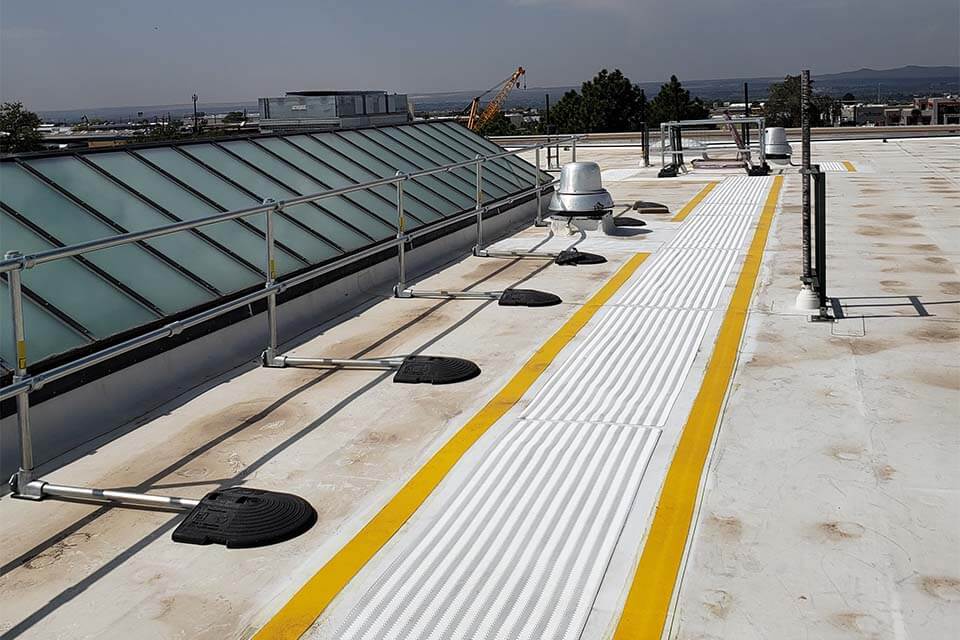
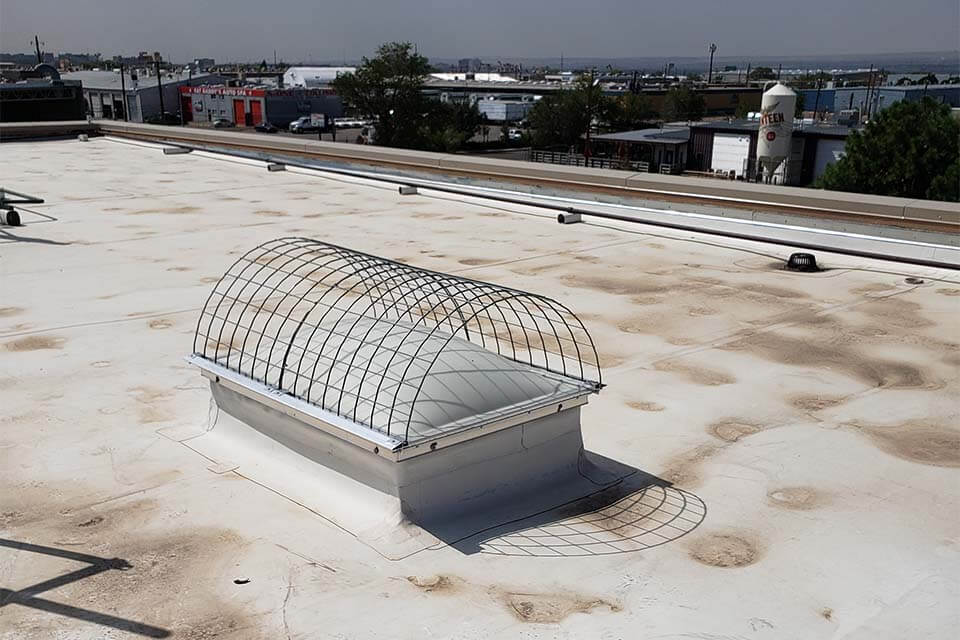
Rooftop skylights can be one of the scariest hazards to miss because they are so easy to overlook, especially on metal roofs. A skylight doesn’t look like a hole but make no mistake, most are not designed to withstand the weight of a worker.
OSHA has a caveat for fall protection for roof edges that are 15’ or more from the working and walking surface. Skylights have no such exception. You must protect workers from falling through them.
Even seasoned professionals have fallen through skylights. Our client knew this and decided they weren’t taking any chances with the lives of their workers. They installed skylight safety screens for their smaller skylights and non-penetrating guardrail for their larger skylights.
Provide Safe Walking Surfaces
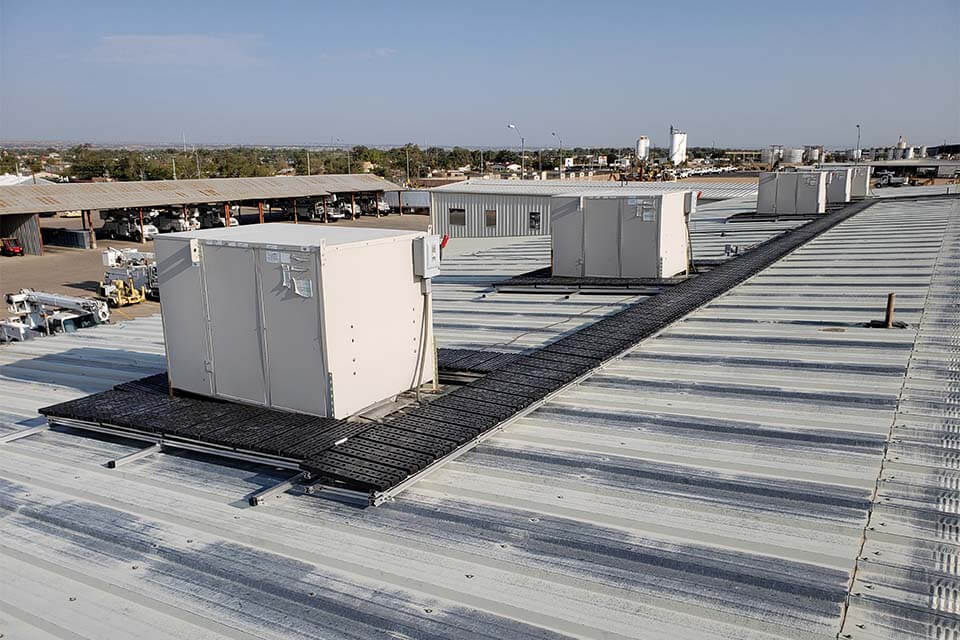
Tumbles off an edge are not the only fall hazard on a roof. Slips and trips can cause serious injury to workers, especially if they are walking on a metal roof.
Standing seam and corrugated (also known as r-panel) roofs can be slippery in the rain or during cold weather. The ribs and seams are also tripping hazards. This is before they encounter any conduit and piping on the roof.
Another concern is the state of the roof itself. It’s no secret that metal deteriorates over time. Sometimes the deterioration isn’t easy to see, and the worker walks on a compromised section of the roof and falls through.
These are just some of the reasons why it is so important to provide safe walking areas for your workers. Our client chose the Kee Walk Walkway to provide a non-slip and level working surface for their employees to walk around the roof.
Wrapping Up
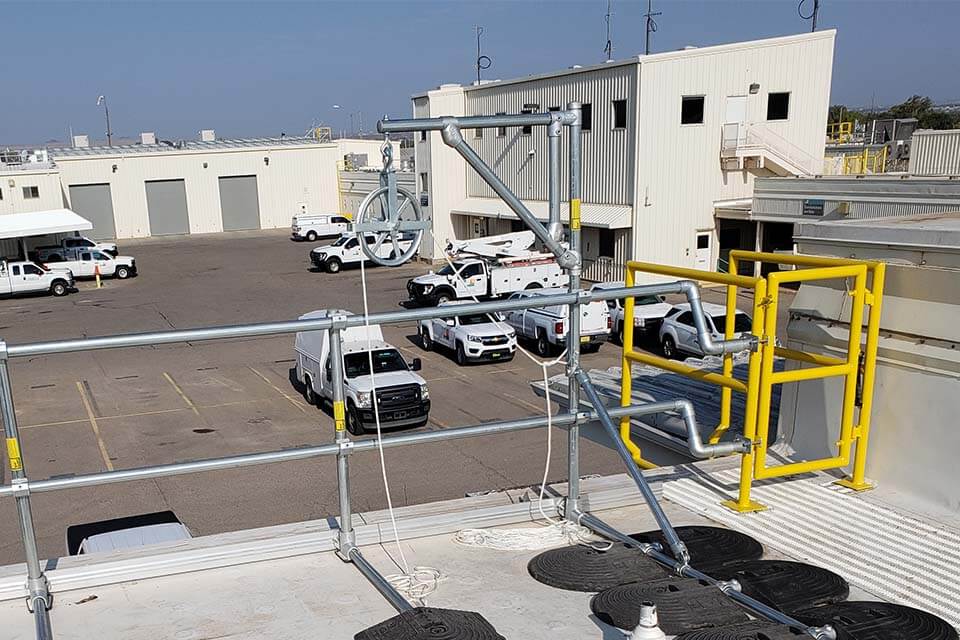
There are more ways that you can provide safety for your facility’s rooftop. This can include a safe means of hauling tools to the roof to adding safe access platforms for your mechanical units.
Whatever you do, know that you don’t have to do it alone. We have a team of trained experts that can help you assess your rooftop and develop a solution that keeps your people safe. Send us a message to get the consultation started or call 1.866.527.2275.


